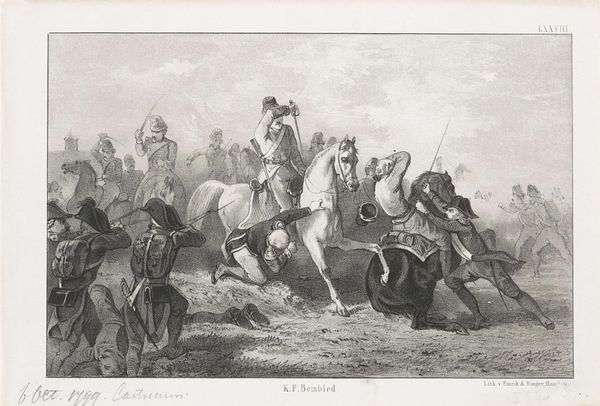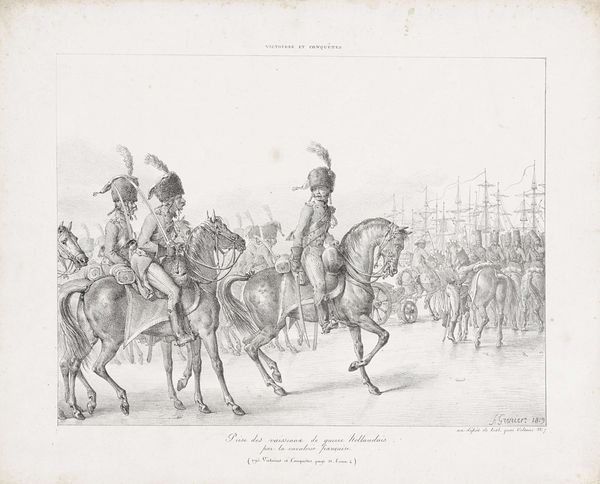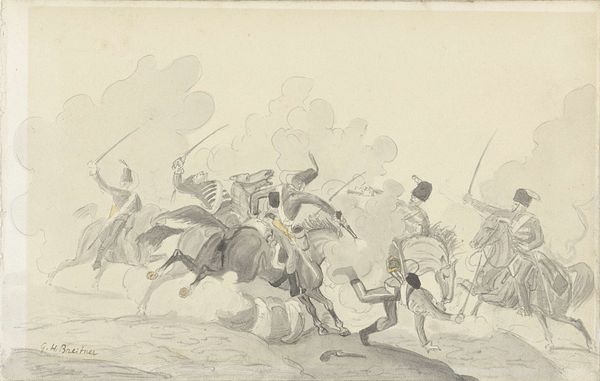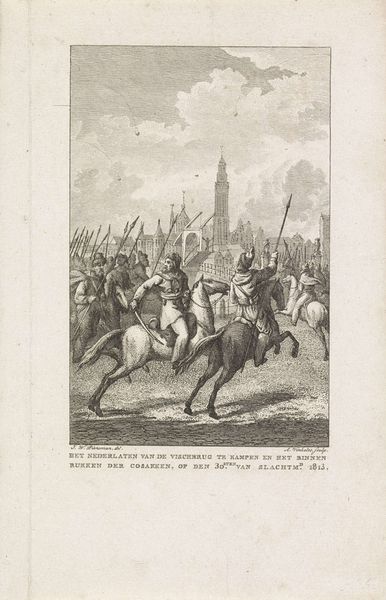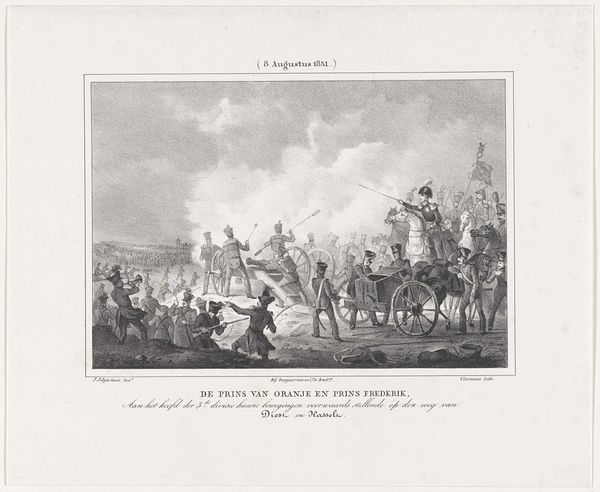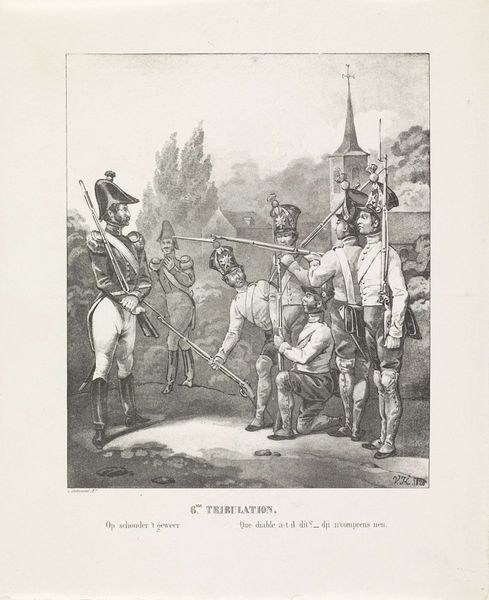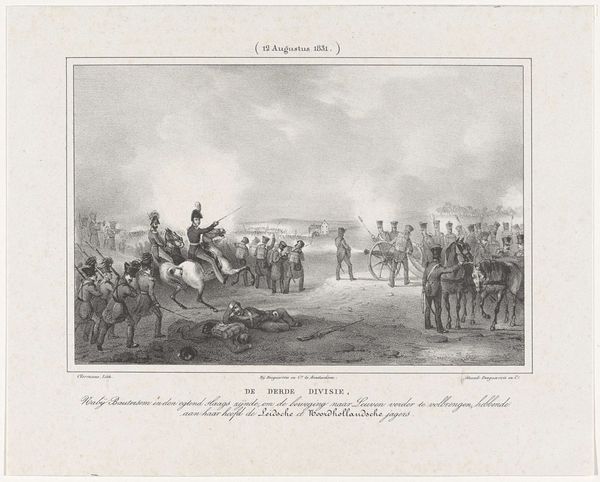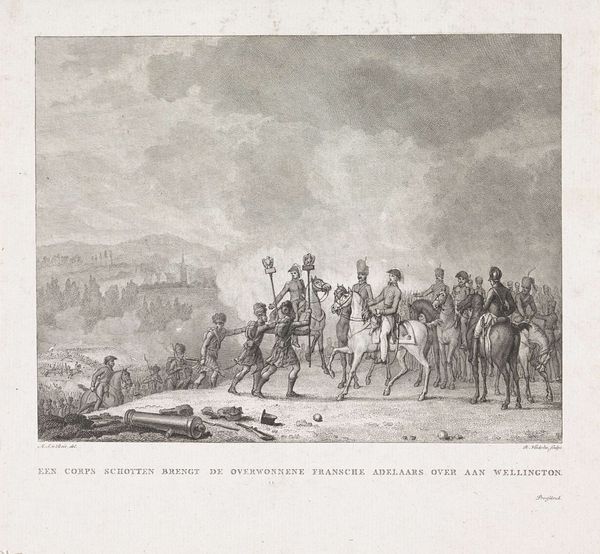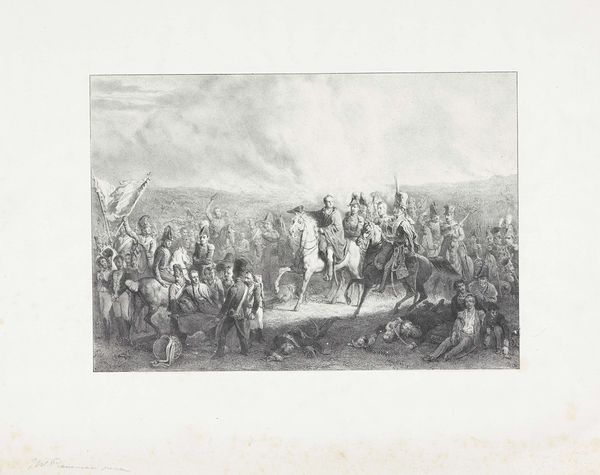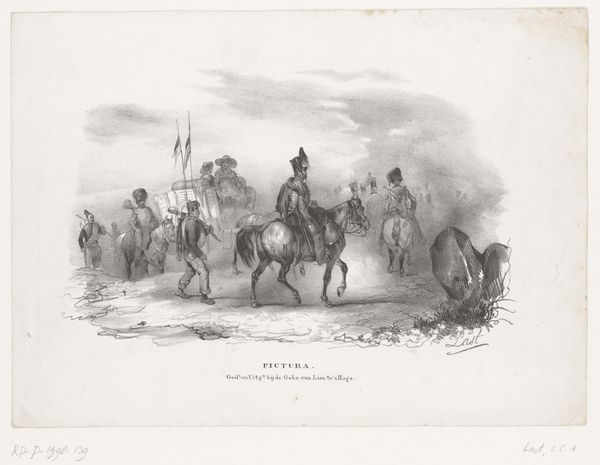
print, graphite, engraving
#
portrait
#
neoclacissism
#
narrative-art
# print
#
landscape
#
figuration
#
romanticism
#
line
#
graphite
#
cityscape
#
history-painting
#
academic-art
#
engraving
#
realism
Dimensions: height 347 mm, width 445 mm
Copyright: Rijks Museum: Open Domain
Editor: So, this is "Inname van Menin, 1793," an engraving made in 1818 by François Grenier. It feels… triumphant, but also quite formal. What strikes you about this depiction of military victory? Curator: What immediately jumps out is how this image functions within the broader context of visualizing power. It’s not simply about depicting a historical event; it’s about crafting a narrative around nationalism and military might, common in Neoclassical art and how such work legitimized power. What sociopolitical assumptions underpinned the work's creation, and what messages might it have conveyed to its intended audience? Editor: I hadn’t considered that angle. It's like it's trying to construct a certain idea of national identity through the act of conquering a city. Do you think there's any specific symbolism we should be aware of? Curator: Absolutely. Note the meticulous rendering of the soldiers' uniforms, the focus on order, and the stoic posture of the central figure on horseback. These elements, carefully constructed, glorify military service. This is all visual rhetoric to promote patriotism. But think about what stories aren’t being told. Editor: Right. We see victory and order, but what about the human cost? What about the perspectives of the people of Menin? I guess this helps to solidify national narratives. Curator: Precisely. How do images like these perpetuate certain power structures and potentially marginalize other narratives? It’s a valuable lesson on engaging with art. Editor: I'll definitely look at historical art differently. There's so much more beyond the surface representation. Curator: Indeed. Art is rarely just about what we see. It’s about power, identity, and the complex webs of history.
Comments
No comments
Be the first to comment and join the conversation on the ultimate creative platform.
